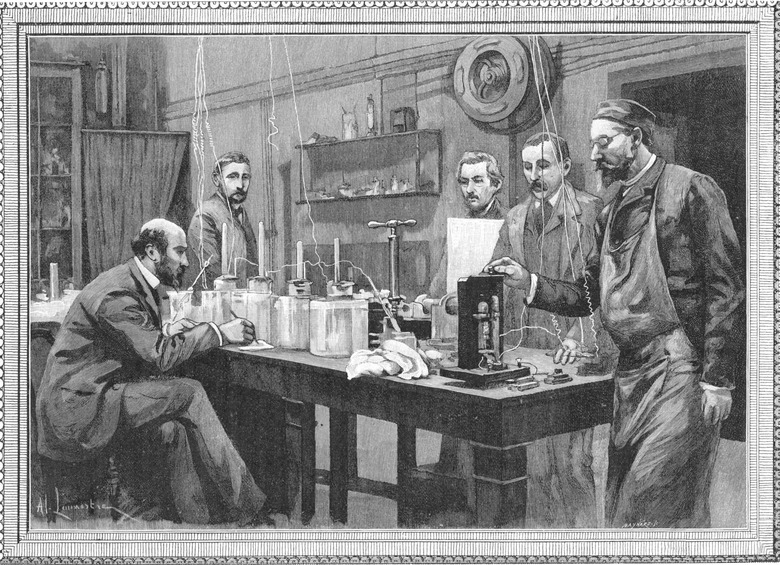Thermopile Vs. Thermocouple Fireplace
Thermocouples and thermopiles use the principles of thermoelectricity to generate electricity by measuring temperature. These devices appear in numerous applications, including appliances such as gas fireplaces and fireplace inserts. Understanding the differences between a thermopile and a thermocouple fireplace requires an understanding of the differences between these two devices. Luckily, despite the scientific complexity of thermopiles and thermocouples, you can understand their basic purpose through a brief description.
Thermocouple
Thermocouple
Thermocouples first appeared after the discovery of the thermoelectric effect by Thomas Johann Seedbeck in 1821. Seedbeck discovered that a pair of junctions between two wires made of different metals creates voltage equal to the temperature difference between the junctions. Basically, a thermocouple consists of two wires made of different metals joined in two places. Heat enters at one end, splits, travels down each wire separately, then rejoins. When it rejoins, it creates electricity. The voltage of the electricity gives an accurate reading of a temperature between the ends of the device.
Thermopile
Thermopile
A thermopile consists of nothing more than a series of interconnected thermocouples. Each additional thermocouple placed in a thermopile increases the device's ability to produce electricity. For instance, if a thermocouple generates two volts of electricity, and a thermopile contains four thermocouples, it generates two volts of electricity per thermocouple for a total of eight volts. In addition to measuring temperature difference and generating electricity, thermopiles can detect radiation within an environment. When used to measure temperatures, thermopiles and thermocouples must attach to a device that translates the voltage of the wire to a temperature reading.
The Differences
The Differences
Three obvious differences exist between thermopiles and thermocouples. Most obviously, thermopiles contain a series of interconnected thermocouples, meaning that technically speaking any device using thermopiles contains thermocouples. While both thermopiles and thermocouples give accurate temperature readings, thermopiles generate more electricity in doing so, making them more valuable in appliances that use them to generate electricity, not to read temperature. Also, while both devices detect radiation, thermopiles do so much more accurately, with a greater degree of sensitivity.
In Fireplaces
In Fireplaces
Gas fireplaces and fireplace inserts use thermocouples and thermopiles primarily to generate electricity. When turned on, the pilot in a gas stove generates heat, which travels through a thermocouple. As the heat reaches the second junction of the thermocouple, it generates electrical voltage. The fireplace uses this voltage to open the gas valve, allowing gas to flow out and start a fire. Because thermopiles generate more electricity than thermocouples, fireplaces with thermopiles can connect to thermostats for temperature control. Fireplaces with thermocouples lack sufficient electrical current for this.
